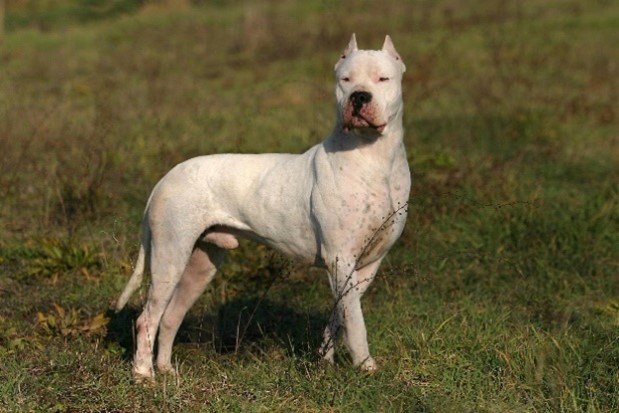Safeguarding and Dangerous Dogs One Minute Guide
What are the concerns regarding dogs when working with children and families?
Having a dog can have physical and emotional benefits for a child and their family. Animals such as dogs and cats can also help teach children and young people about responsibility and caring for living creatures. However, a number of children and adults of different ages have been seriously injured or have died from attacks by dogs in recent years.
The BBC identified that in the UK, there has been an annual increase in dog attacks since 2018, with a 21% increase in reported dog attacks between 2022 – 2023.
There have been a number of cases reported in the press where people, both children and adults have been severely injured and killed by certain breeds of dog. According to the Dog’s Trust, up to 91% of dog bites to children happen in the home with a dog they know.
Dogs are pack animals and have a natural instinct to protect their families. They are normally protective of their environment and owners and some dogs may be aggressive towards professionals visiting their homes or places they consider their territory.
What legislation exists to control dangerous dogs?
The Dangerous Dogs Act (1991) recognises that:
- Any dog can be ‘dangerous’ (as defined by The Act) if it has already been known to inflict or threaten injury
- A dog can also be defined as “dangerously out of control” by the Act: “… a dog shall be regarded as dangerously out of control on any occasion on which there are grounds for reasonable apprehension that it will injure any person or assistance dog, whether or not it actually does so”
- Certain dogs are ‘prohibited’ and if any agency has any knowledge or report of a dog of this type, the matter should be reported to the police immediately.
The Antisocial Behaviour, Crime and Policing Act 2014 also extended the remit of Dangerous Dogs Act.
What breeds of dogs are prohibited?
Certain dogs are prohibited under the Dangerous Dogs Act 1991 and if any agency has any knowledge or report of a dog of this type, the matter should be reported to the police immediately.
Prohibited breeds are defined by the Act as “any dog of the type known as Pit Bull Terrier, the Japanese Tosa, the Dogo Argentino and the Fila Braziliero”.
XL Bullies have also been banned in the UK after several serious attacks and a fatality involving the breed.
The table below provides information regarding each of these breeds and what to look out for:

Pit Bull Terrier
The Pit Bull terrier originated in England and was bred for fighting.
The breed has also been used in blood sports like bull and bear baiting, where packs of dogs were set against bigger animals in a pit. These “sports” were made illegal in 1835.
Japanese Tosa
The Japanese Tosa originated from the Tosa and were bred for fighting.


Dogo Argentino
The Dogo Argentino was bred in central Argentina, primarily for hunting large game.
Fila Braziliero
The Fila Braziliero is a Brazilian breed of working dog.
It is used as a guard dog, for cattle herding and for big-game hunting.


XL Bully
The XL Bully breed type is a variant of the wider American Bully breed type. The XL Bully breed type is typically larger (both in terms of height and body shape) and more muscular than other American Bully breed types such as the ‘Micro’, ‘Pocket’, ‘Standard’ and ‘Classic’. XL Bullies also have great strength and are powerful for their size.
What do I need to consider when carrying out my role?
When a practitioner from any agency undertakes a home visit or carries out an assessment, and there are both child(ren) and dog(s) in the household, the practitioner should follow the NYSCP Practice Guidance (available here).
As part of any visit or assessment, practitioners should:
- Consider whether the presence of the dog(s) presents any kind of risk to the welfare of the children
- Consider their own safety and that of their colleagues that the dog(s) may represent
- Discuss with the parents or the pet owner, the dog’s behaviour and identify any risks to the children
- Make it clear in the referral that they have had a specific conversation with the family about the dog and they have a reason to believe the child is at risk rather than putting a referral into the police when there is a dog that is deemed to be classed as a dangerous breed without any further information.
Practitioners should proactively ask parents whether there are pets in the households they visit, and advise accordingly as follows:
- Their children should never be left alone with a dog, even their own.
- Their children should be supervised when they are with a pet. If the animal looks unhappy, remove them to somewhere they feel safe.
- Never allow their children to approach an animal they don’t know
How do I keep myself safe when working with a family with dog(s)?
Staff who are required to visit families at home may find themselves in the presence of animals which are an unknown quantity. Your safety is paramount. Consider the following approaches when conducting visits to families with pets:
- Before beginning work with a family, review any information available on the family records to aid the completion of a risk assessment before entering a family home.
- Remember to consider the presence of pets (particularly dogs) as a potential risk in family households, and factor in the fact that young, non-mobile and disabled children may be unable to alter their behaviour around an animal as part of a risk assessment.
- Advise that children should never be left alone with dogs and consider whether appropriate resources can be passed on to the family.
- Dogs can potentially be used to intimidate members of staff. If you have any concerns prior to a visit, consider calling ahead to ask for the dog to be put away into a secure place such as the kitchen or garden.
- If you encounter a dangerous or aggressive dog, you can report the animal to the police or the NYC Website.
- Not all Professionals are expected to be able to identify dangerous dogs. If you are unsure whether a dog is dangerous, raise your concerns with you line manager to discuss next steps.
- Consider sharing information with other agencies who may visit the home if you consider a dog to be unsafe.
Where can I find more information?
Practice guidance can be found on the North Yorkshire Safeguarding Children’s Partnership Procedures Manual:
https://www.proceduresonline.com/northyorkshire/scb/p_danger_dogs.html
Information about dogs and Dog Wardens can be found on the North Yorkshire Council website:
https://www.northyorks.gov.uk/environment-and-neighbourhoods/animals/dogs
For information on banned dogs and reporting concerns about a dangerous dog, visit:
https://www.gov.uk/control-dog-public
For information on the Dangerous Dogs Act 1991:
https://www.legislation.gov.uk/ukpga/1991/65/contents
For information on the Anti-Social Behaviour, Crime and Policing Act 2014 visit:
https://www.legislation.gov.uk/ukpga/2014/12/part/7/enacted
Further information can also be accessed from the following websites:
- The Blue Cross Be Safe with Dogs Leaflet – Guidance for Families
- The Dogs Trust: Staying Safe With Dogs
- Battersea Dogs and Cats Home
- Kennel Club’s Safe & Sound Programme with Resources for Schools
- Dogs, babies and children: living safely together (Institute of Health Visiting)
Page Reviewed August 2024




 View all our news
View all our news